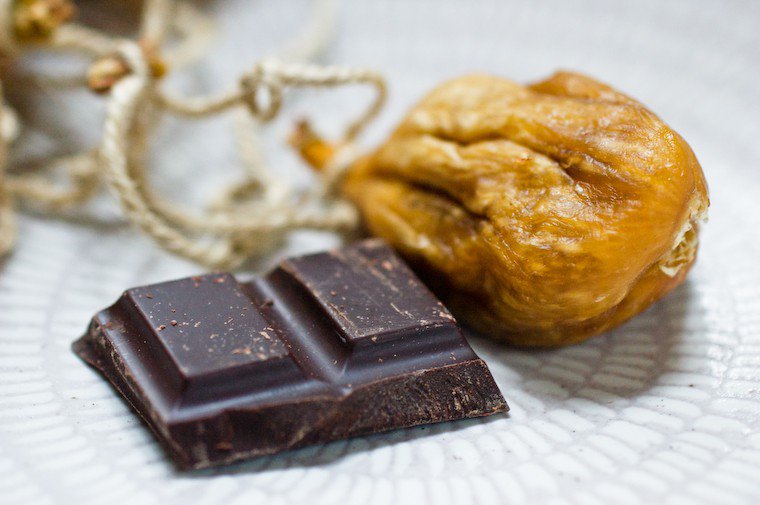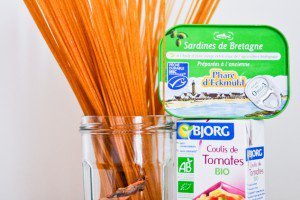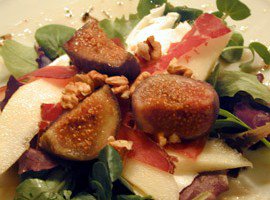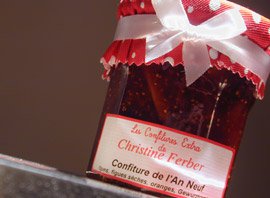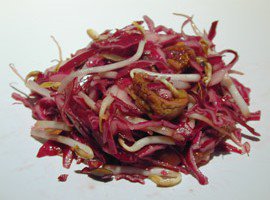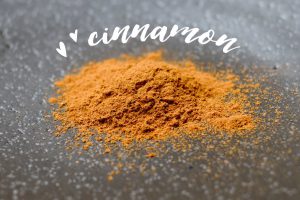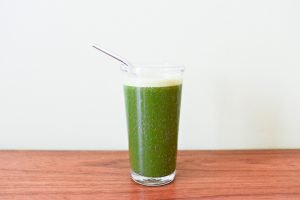Perhaps you remember the fig ice cream I wrote about earlier in the fall. Wanting to bolster the spirit of my fresh figs — the last of the season — I set out to buy dried figs, only to be told that my organic shop was all out, and still waiting for the new crop to be delivered. Aha! This made complete sense — fresh figs need a little time to dry, yes? — but the seasonality of dried fruits wasn’t a matter I’d ever given much thought to.
Not a fortnight later, waiting in line at the little stand at the Batignolles market where I buy my walnuts and such, I caught sight of a cardboard sign that read, “Figues séchées, nouvelle récolte!” Next to it was a box of baglama figs* from Turkey, wreathed together by a crude string that looped and looped around their tips.
Dried, yes, undoubtedly, but still soft, plump, and holding their pouch-like shape: a far cry from the shrivelled pucks one ordinarily comes across. These were the most glowing dried figs I’d ever seen, and I didn’t need the tasting sample that was kindly offered to know I would not go home without a fig garland.
Just like the Burgundy prunes I hold so dear, these figs are too good to cook with: they are best savored on their own, torn open with your fingers to expose the flesh and seeds**, or, and this is my current collation obsession, with a square or two of Montezuma’s chili chocolate, brought back from London.
So simple, yet so superb a pairing. The muscular sweetness of the fig, the bitter edge of the chocolate, the soft but persistent heat of the chili, the conjunction of leathery, grainy, solid and smooth — what more could one wish for?
* Although the lady told me it was the variety of fig, the term baglama seems to refer to the drying method instead — bağlama means amongst other things “tying,” or “knot” in Turkish (perhaps someone who speaks the language can confirm or infirm). It is also the name of a remarkably fig-like string instrument.
** Botanically speaking, I’m told, these seeds are in fact the real fruits, held prisoner in that fleshy pouch we call “fig.” Let us not go into how many fruit servings this translates to.


